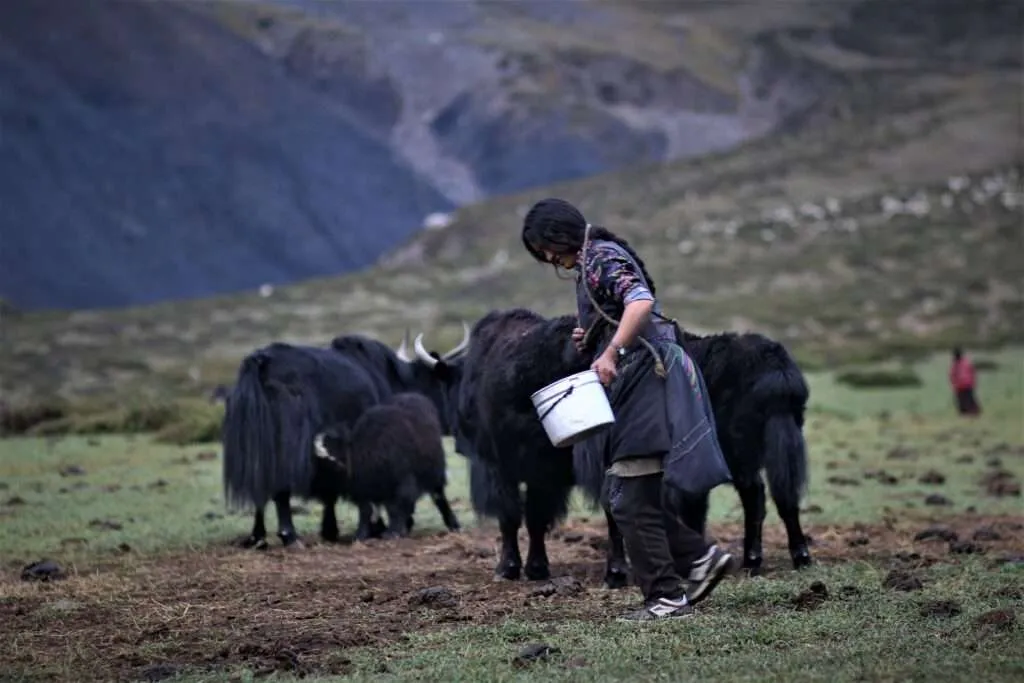
Imagine a world where the air is thin, the winters are harsher, and traditions date back centuries. Welcome to Ladakh—the land of towering peaks and resilient yak herders. Yet today, these communities face an invisible foe: a rapidly warming climate.
Climate change is affecting us now. Glaciers are melting quickly, and pastures are shrinking. Yak populations have dropped from 34,000 in 2012 to below 20,000 in 2019. However, the people of Ladakh are taking action. They are creating ice stupas and restoring pastures, and their handmade yak products are gaining worldwide recognition.
Let’s dive into their inspiring journey. You’ll learn how these mountain stewards are adapting. You will understand why their story matters to all of us. We will also explore simple steps you can take to support them.
🔍 The Crisis at a Glance
Food Shortage and Herd Health
- Less nutritious alpine grass, replaced by invasive shrubs and weeds, is forcing yaks into malnutrition.
- Rising bacterial and parasitic diseases are linked to hotter weather in Ladakh’s high-altitude terrain.
Livelihoods Under Threat
- Younger generations avoid herding because of the harsh physical demands. The profession also offers poor returns. Instead, they choose opportunities in education, military service, or tourism jobs. These careers are perceived to offer better prospects and more appealing working conditions.
- This threatens traditional culture and breaks inter-generational knowledge transfer .
🌱 Ecosystem Consequences
- Yak herders play a vital role in grazing land management and biodiversity upkeep. Their disappearance may allow invasive shrubs to dominate, reduce wildlife food sources, and disrupt ecological balance .
- The fragile alpine terrain—habitat for species like the snow leopard and blue sheep—depends on this symbiotic balance.
🚩 What’s at Stake for Yak Herders?
- Pasture Breakdown: Warmer winters and irregular rain make it difficult for yak herds to find food. Less snowmelt results in drier grasslands and stressed animals.
- Cultural Rift: Young people are leaving herding for city jobs, threatening centuries-old traditions.
- Ecosystem Ripples: Yaks help maintain alpine biodiversity, from snow leopards to wildflowers. Fewer yaks mean less balance.
But where there’s challenge, there’s also innovation. Scroll on to meet the solutions that are turning crisis into hope.
💡 Ice Stupas: Turning Water into Winter Magic
Ladakhi engineers are building towering ice cones—called ice stupas—that store winter water as ice. As spring arrives, they melt and feed vital pasture streams. This ancient-modern hybrid method is helping revive grazing lands, one icy pyramid at a time.
🌱 Posture Revival & Community Action
Local councils (Dzumsa) and scientists are teaming up to replant native grasses, remove invasive weeds, and manage grazing patterns. Slowly, green shoots are pushing back into once-bare highlands.
🧶 From Yak Wool to Wellness: Sustainable Income Streams
Artisans are spinning yak wool into fine yarns that rival cashmere. Elsewhere, traditional butter and cheese are hitting niche markets. Every purchase helps families stay on their land and keep herding alive.
🌍 3 Ways You Can Help Right Now
- Shop Ethically: Buy yak wool products from certified cooperatives to guarantee fair pay.
- Spread the Word: Share Ladakh’s story on social media—tag NGOs and policymakers to amplify their voices.
- Donate & Volunteer: Support organizations funding ice stupas, pasture projects, and youth training.
🔥 Why Their Story Should Matter to You
Ladakh’s yak herders are climate heroes in the making. Their innovations offer blueprints for communities worldwide facing extreme weather. By standing with them, you join a global network turning adaptation into opportunity.
“When mountains whisper their secrets, we must listen and act.”
– A Ladakhi Elder
👉 Ready to make a difference? Visit our Our Mission page and discover how even small actions can ripple into mountain-wide change.

No responses yet